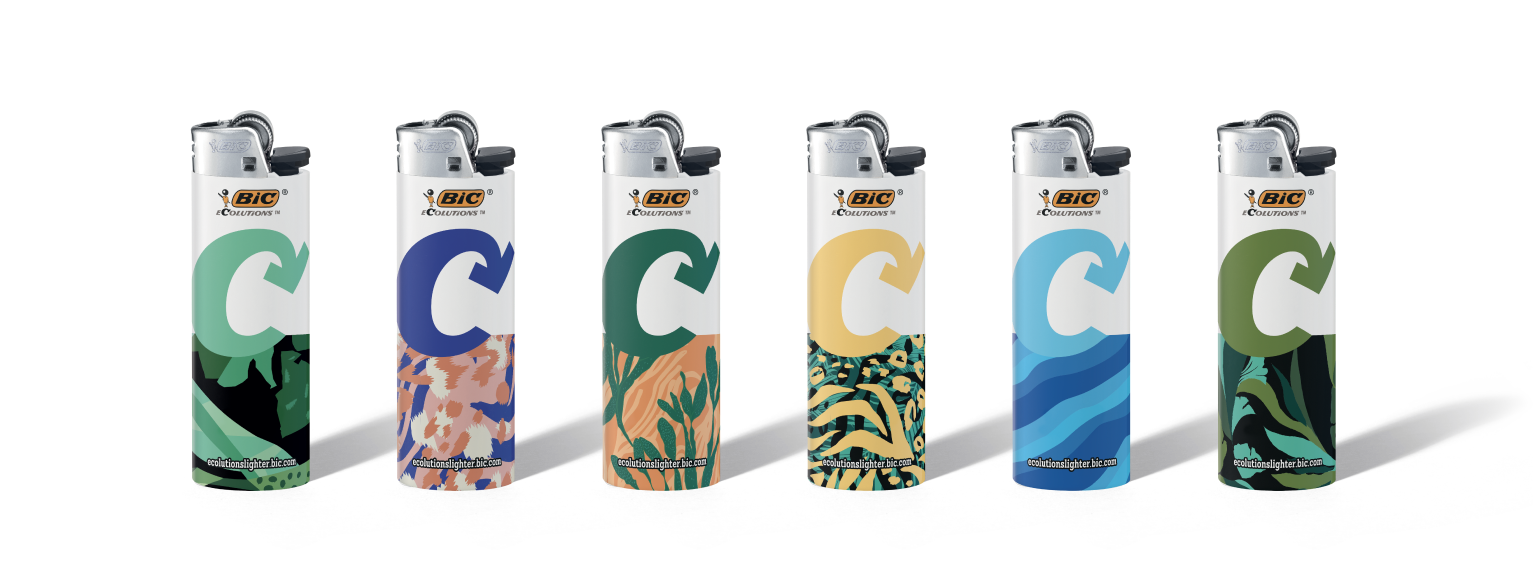This BIC® Ecolutions™ Lighter integrates all the best sustainable development options BIC® has identified so far
with scientific and research laboratories, without compromising the performance, quality and safety of the product.

A more environmentally friendly version
of the iconic BIC® Classic® lighter
What’s new with BIC® Ecolutions™?



* Bio-attribution means that a quantity of raw material of natural origin is attributed to a finished product according to the mass balance principle. To produce bio-attributed Plastic, BIC® supplier uses a production system where biomass raw material is mixed with fossil raw material. They are then indistinguishable. The mass balance principle allows the volume of bio-attributed Plastic purchased by BIC® to be "attributed" to BIC® Ecolutions™ lighter (through a documented system certified by an independent body, ISCC - International Sustainability & Carbon Certification) and to prove that it is actually produced by BIC®. This attribution system ensures a significant reduction of the carbon footprint. Through this purchasing method, BIC® contributes to the transition from the use of fossil-based raw materials to renewable alternatives.
“ECOLUTIONS”
BRAND

BIC® Ecolutions™ Lighter is part of a line of different products developed and marketed under the Ecolutions™ brand name by BIC® over the past 15 years, whose common DNA is to contain recycled materials.

How did we reduce the carbon footprint
of BIC® Ecolutions™?
We evaluated
BIC® Maxi Classic’s
Carbon Footprint
First, we asked a specialized firm (EVEA) to conduct a Life Cycle Assessment of the BIC® Maxi Classic® lighter, which measured its carbon footprint at each stage of its life, from the extraction of raw materials to the disposal of the used product.
We completed
CO2 reduction efforts
Then, we implemented CO2 reduction efforts and developed BIC® Ecolutions™. Again, we asked a specialized firm (EVEA) to conduct a Life Cycle Assessment of the BIC® Ecolutions™ Lighter. This allowed us to measure the CO2 emission reductions compared to the BIC® Maxi Classic® lighter, due to recycled or biosourced raw materials.
We decided to go further
by offsetting 30% of carbon
emissions
Then, we decided to go even further by offsetting 30% of carbon emissions of each lighter through certified programs: The so-called carbon offsetting approach consists, after having sought to reduce its CO2 emissions, of financing projects that reduce and sequester CO2 in order to compensate for its own emissions (for example, reforestation programs). The carbon offsetting programs selected by BIC® and its climate and energy advisor are certified by Verra Registry System or Gold Standard and consist of climate projects (mostly agroforestry).
What’s goes into a BIC® Ecolutions™ Lighter?
Same Quality & Safety, Same performance
With up to 3,000 lights but with many improvements
(representing less than 8g of raw material per 1,000 lights)



* Bio-attribution means that a quantity of raw material of natural origin is attributed to a finished product according to the mass balance principle. To produce bio-attributed Plastic, BIC® supplier uses a production system where biomass raw material is mixed with fossil raw material. They are then indistinguishable. The mass balance principle allows the volume of bio-attributed Plastic purchased by BIC® to be "attributed" to BIC® Ecolutions™ lighter (through a documented system certified by an independent body, ISCC - International Sustainability & Carbon Certification) and to prove that it is actually produced by BIC®. This attribution system ensures a significant reduction of the carbon footprint. Through this purchasing method, BIC® contributes to the transition from the use of fossil-based raw materials to renewable alternatives.